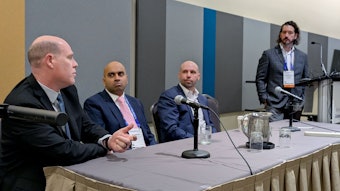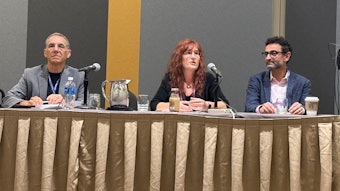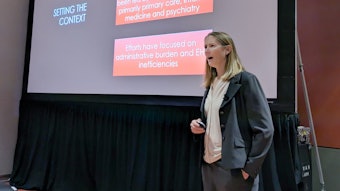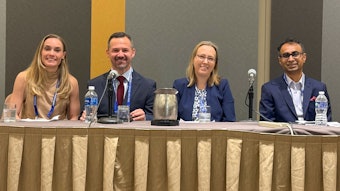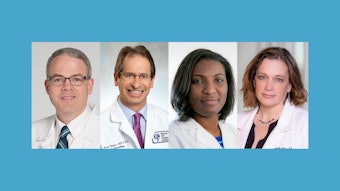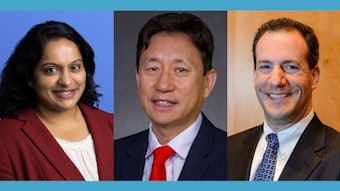Rovenstine Lecture: Harnessing data to improve quality of care
Data expert encourages anesthesiologists to embrace their innate data scientist abilities.
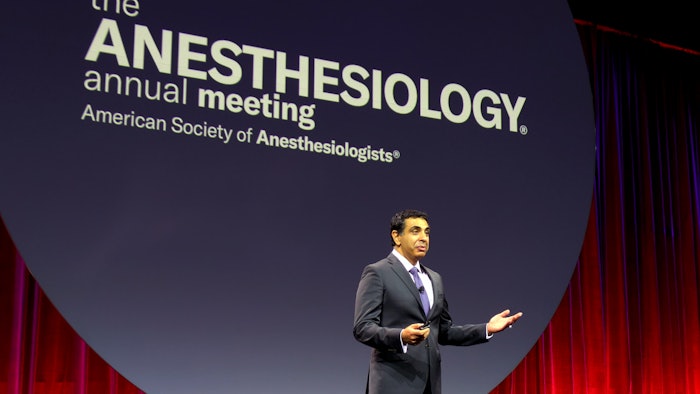
Anesthesiologists are confronted by tremendous amounts of data every day, but is it making them any smarter? The answer, according to Sachin Kheterpal, MD, MBA, is that it depends on how smart they are in using the data.
Dr. Kheterpal, who is a Professor of Anesthesiology and Chair of the Anesthesiology Department at the University of Michigan Medical School in Ann Arbor, Michigan, delivered this year’s Emery A. Rovenstine Memorial Lecture. His presentation “Anesthesiologists as Leaders in a Data-Driven World” explored ways in which anesthesiologists can rise to the position of data leaders within their own health care systems.
Because anesthesiologists are connected to so many specialties and so much administrative data, they are the original data scientists, Dr. Kheterpal said.
“Whether in the pain clinic, the ICU, or the operating room, your daily experience as the anesthesiologist is being a data scientist and creating, analyzing, and making good decisions because of data,” he said. “That’s what data scientists do — they build data sources, whether that’s coming from the electronic health record or a medical device. Then they collect that data and evaluate its quality. Other specialties don’t have this intimate relationship with data.”
A valuable resource for anesthesiologists, according to Dr. Kheterpal, is the Multicenter Perioperative Outcomes Group (MPOG). MPOG is a nonprofit consortium of more than 50 medical centers aggregating inpatient electronic health record (EHR) data, patient report outcomes, and long-term administrative outcomes. It uses this data to analyze the interaction of patient comorbidities, surgical procedures, perioperative care, interventions, and postoperative outcomes.
To date, 33 million patient records have been extracted, mapped, de-identified, and made available for research and performance improvement. Automated emails are generated from a central MPOG server. These emails are sent out every month to more than 11,000 clinicians to help evaluate performance and drive quality improvement in a nonpunitive way.
“Clinicians, faculty, residents, fellows, and anesthesia assistants get feedback on how they are doing on quality metrics they have chosen to be measured upon, and they get a benchmark from other colleagues at that institution and around the country and the world,” Dr. Kheterpal said.
All the data gathered over the years has led to a greater collaboration in quality improvement among not just individuals, but among hospitals and health care systems as well, he said.
“Every hospital is good at something, and every hospital needs to improve at something. No one is a top performer across all the metrics,” he said. “That culture of being able to reach across and talk to somebody else and share your best practices and learn from their best practices — that is actually the special sauce of data science.”
Because anesthesiologists work with so many other specialties and come from so many backgrounds, Dr. Kheterpal said they are uniquely positioned to become leaders in the hospital setting. To embrace their data strengths within their own health care systems, Dr. Kheterpal recommends anesthesiologists hone their leadership traits. They include:
- Practicing humility
- Being decisive
- Applying an enterprise perspective
- Embracing innovation
- Leveraging emotional intelligence
“I’ll be honest, we’re weird. And that’s a good thing,” he said. “We’ve got engineers in here, we’ve got surgeons in here, we’ve got computer geeks like me. We are the Island of Misfit Toys. The paths that people have taken to become anesthesiologists are diverse, unique, and the cause of our success.”
Anesthesiologists possess a broad range of skill sets that aren’t necessarily found in other specialties. According to Dr. Kheterpal, that is exactly what makes them effective leaders and visionaries.
“That broad range of skill sets is what makes us innovators and makes us effective,” he said. “The devices we come up with, the tinkering that we do in the operating room. We mix our own medications. This is not a normal thing for other specialties. We take it for granted. That’s our innovation background.”






